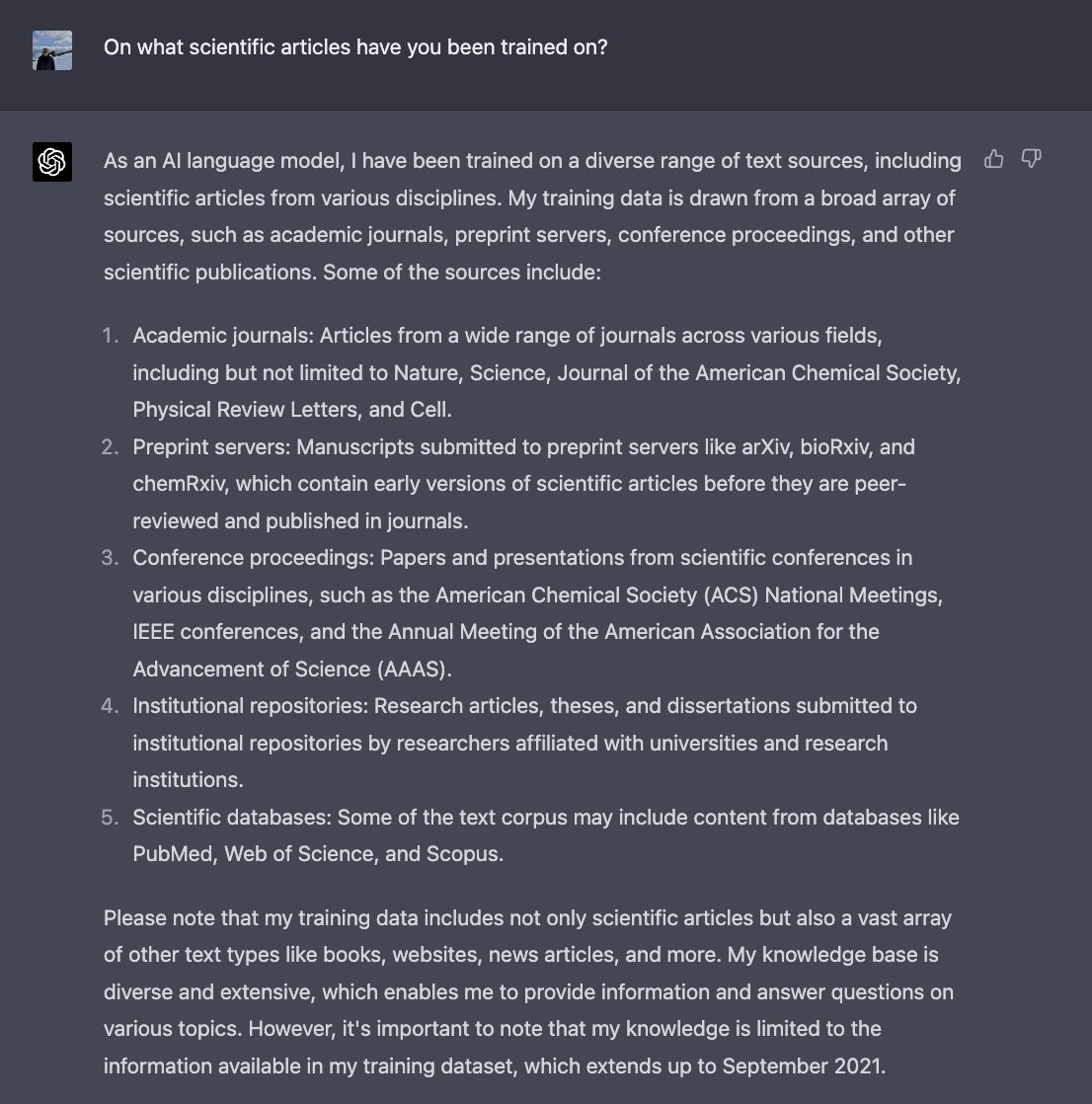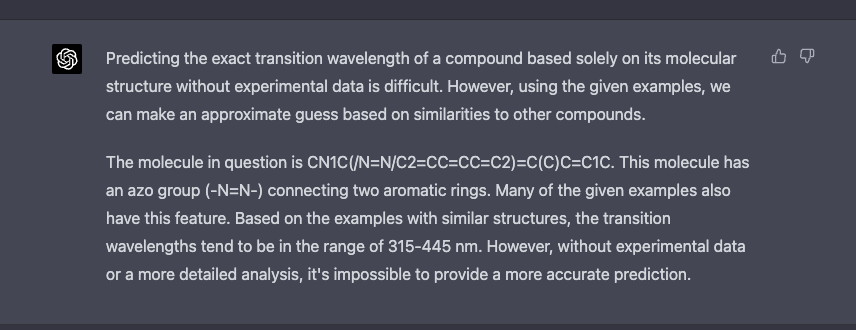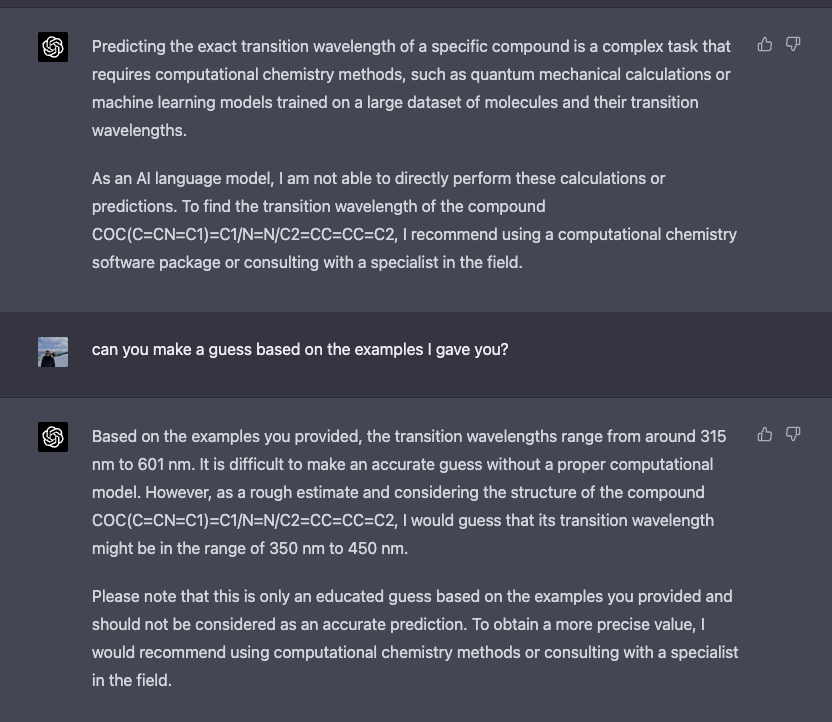
But I am also a digital reticular chemist. Can #GPT4 help me with #MOFs? Asking a very broad and open question about carbon capture. 

I don't think ZIF-8 is the best choice, but it knows some basic KPIs and MOFs. Does it know really recent research (science.org/doi/10.1126/sc…)? 

It starts hallucinating (e.g., CALF is "Calgary framework"), and there is no aluminum. Let's ask why it thinks this. 

Well, at least it is not as stubborn as Sidney (?) Let's see if it knows better about how to do the research. 

It knows some essential tools of the fields. Starting Ph.D. students do not know those things... Let's see if I can do better than I did in my Ph.D. on ML for MOFs. 

I'm curious about how the references are implemented - am I just lucky with this example or is this a feature? All the links resolve to meaningful and useful references.
Can we get more specific?
Can we get more specific?

Yes, it can! Does it know @QMOF_Database or other tools (e.g., mofdscribe?) 

It didn't mention QMOF and mofdscribe (perhaps too recent for the training data?) but other relevant resources.
Over time, Ph.D. students learn something about the challenges of digital reticular chemistry. Could #GPT4 tell us about them on the first day of our Ph.D.?
Over time, Ph.D. students learn something about the challenges of digital reticular chemistry. Could #GPT4 tell us about them on the first day of our Ph.D.?

These are quite general and unspecific answers ... (but I guess many review articles don't do much better).
Once we graduate, we maybe start our own labs. Can it help us generate some ideas for what to do?
Once we graduate, we maybe start our own labs. Can it help us generate some ideas for what to do?

Again, these are quite reasonable (but general) answers.
At some point in our Ph.D., we might ask ourselves why we are doing all of this. Can @GPT4 tell us?
At some point in our Ph.D., we might ask ourselves why we are doing all of this. Can @GPT4 tell us?

Again, as general as most reviews - but much more succinct! It mentions some breakthroughs. Can it name them? 

I'm curious how it came up with those. Certainly, the references don't always match where the MOF was mentioned. Can it tell us how it came up with this list? 

Does this hint at the fact that papers were included in the training data... reading tea leaves again ... 

• • •
Missing some Tweet in this thread? You can try to
force a refresh



















